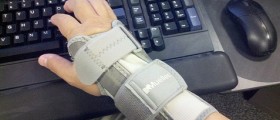
Most cases of carpal tunnel syndrome do not require surgery. This is regarded as necessary only in certain cases. If symptoms are taking too long to improve with the application of non-surgical treatments, it may be proposed. This would typically take place only after three to 12 months. The assumption is submitted, of course, that no nerve damage has come about during this time. If that were the case, the surgery would be much more urgent.
Severe symptoms associated with this condition may largely obstruct every day activities of the patient. If there happens to be a persistent loss of feeling or coordination in the fingers, decreased strength levels or pain induced lack of sleep, it may be necessary to resort to a more radical measure. These symptoms would undoubtedly point out to nerve damage. Carpal tunnel release is a surgery that relieves the pressure on the median nerve in the wrist. It is conducted by cutting the ligament which is forming the top of the carpal tunnel. This would reduce the pressure, and the surgery itself can be broadened so as to remove any other affecting tissue, such as a tumor for instance.
Following the procedure, the patient will get strict instructions on home treatment. These are to be upheld to the letter so as to avoid complications or even worsening of the condition.
The usual method used to relieve the symptoms includes cutting the mentioned ligament. There are two major approaches to this end. First is an open carpal tunnel release surgery, through which the surgeon can have a better view of the inner tissues. This would also allow him a good view over the ligament which in turn allows for a more precise cutting. This surgery requires two incisions – one in the palm and the other in the wrist. This disturbs more hand tissue and induces a longer recuperation period. It can also leave a notable scar.
The other procedure is called the endoscopic carpal tunnel release surgery. This requires one small incision in the wrist or two, in case of a two-portal technique. The recovery period is significantly quicker as well as the healing rate. The surgery itself lacks in intensity of side-effects such as pain and discomfort associated with the first method.
Lately, there have been instances of taking a middle ground approach between these two options and performing a mini-open release surgery. It requires a smaller incision, but it also presents the surgeon with a better view of the affected area. This new option shows great promise, but there is little documentation to draw concrete conclusions as of yet.

















Your thoughts on this
Loading...